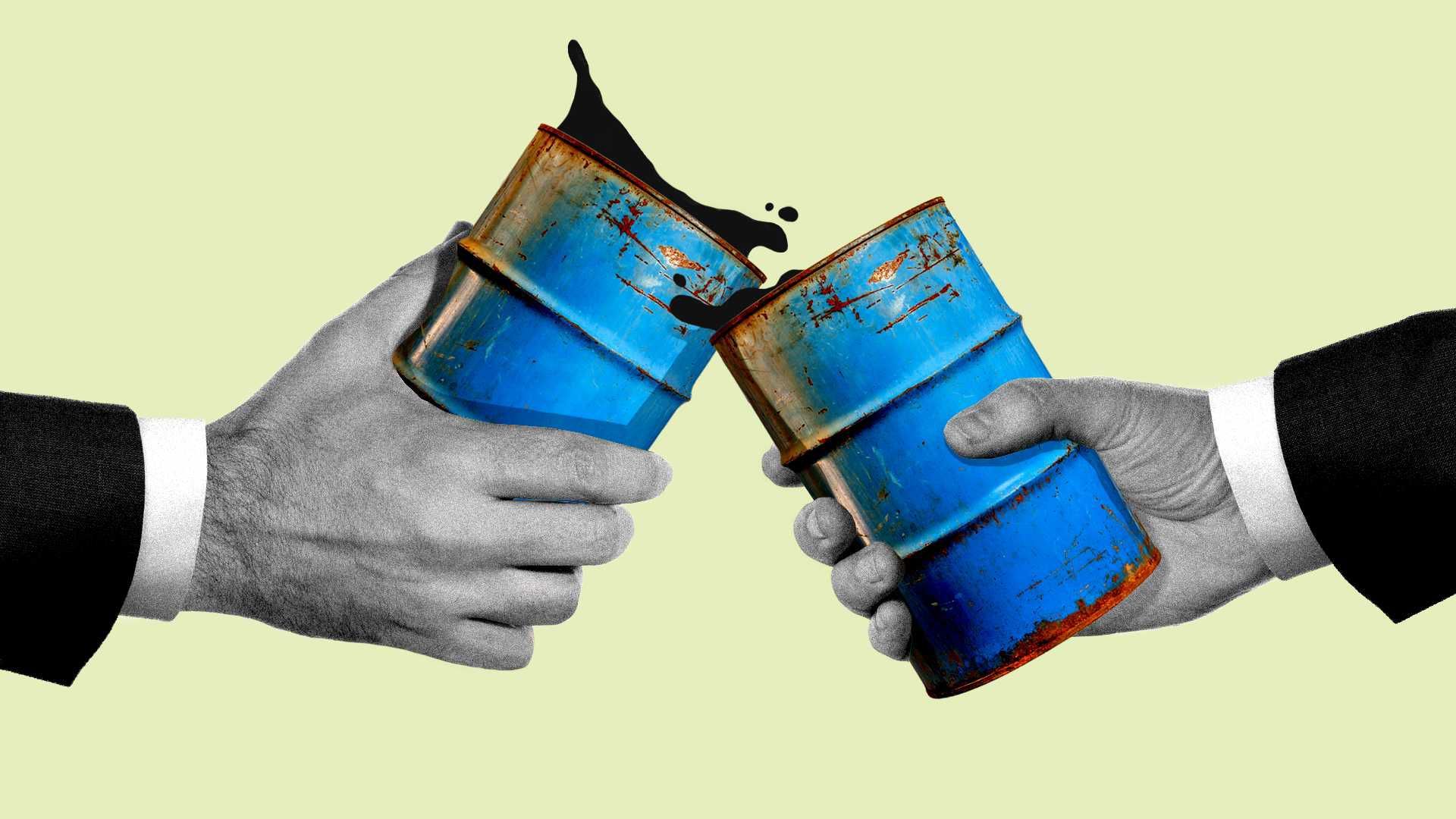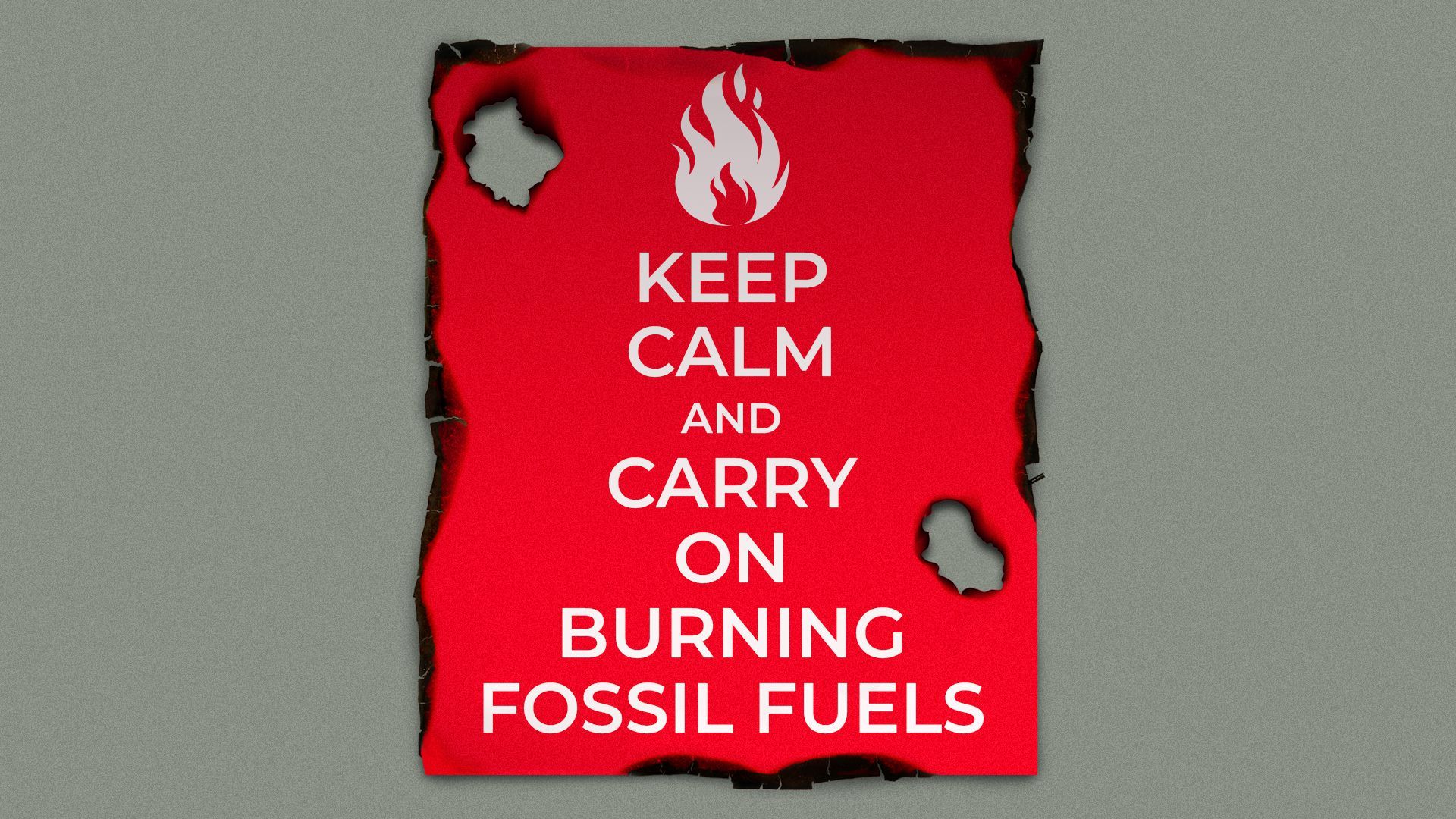| |
| |
| |
| Presented By Air Products |
| |
| Axios Generate |
| By Ben Geman and Andrew Freedman · Jul 29, 2022 |
| 💃🏽🕺Friday is here! Today's newsletter, edited by Mickey Meece, has a Smart Brevity count of 1,256 words, 5 minutes. 🚨 Deadly flooding hit parts of Kentucky and Virginia, with more torrential rain forecast today in the Ohio and Tennessee Valleys. 🎶 Fifteen years ago, Rihanna (with an assist from Jay-Z) wrapped up seven weeks atop the Billboard Hot 100 with this week's final intro tune... |
| |
| |
| 1 big thing: The key provisions of the climate deal |
 |
|
| Illustration: Annelise Capossela/Axios |
| |
| The climate and energy provisions in the Senate's revenue and spending deal cover everything from incentives to buy electric vehicles to spurring the development of next-generation climate technologies, Andrew writes. The big picture: The proposed bill is designed to bring U.S. carbon dioxide and methane emissions down and dramatically scale up the development and deployment of new technologies. - The draft plan has roughly $370 billion worth of energy and climate provisions.
The biggest changes, if the bill passes: Clean energy tax credits: Several climate policy experts told Axios yesterday that these provisions taken together would make the biggest difference in cutting emissions. - These include a decade of tax credits that would apply broadly to zero carbon technologies including existing nuclear power plants and advanced nuclear technologies, clean hydrogen, carbon capture, and storage as well as wind and solar power.
- The bill would also provide incentives for deploying direct air capture technologies.
- Federally funded demonstration projects are underway for everything from clean hydrogen to long-duration energy storage. The proposed bill would provide a path for some of these projects to go on to deployment.
- Many consumers would qualify for home energy retrofits under a program aimed at improving energy efficiency and lowering energy bills (think heat pumps and electric stoves).
Electric vehicle incentives: These provisions would speed the wider adoption of clean technologies and help reduce transportation emissions, which are the largest contributor to U.S. annual emissions. - Specifically, the bill provides up to a $7,500 clean vehicle tax credit for EVs that are built in North America, with added incentives for having battery components largely manufactured or assembled in North America. The credit could be applied as a rebate at the point of sale.
- The bill would also provide $4,000 in tax incentives for the purchase of used clean vehicles. The EV incentives would be subject to annual gross income limitations, to direct the benefits toward mass-market consumers.
Methane fee: Another provision that would have a big impact, according to policy analysts and scientists, is a methane fee program that would make it increasingly costly for the energy industry to emit this powerful greenhouse gas. What's not in the bill: The deal leaves out some elements of previous climate proposals, such as incentives to build new electric transmission lines to support the broader deployment of renewables. The intrigue: The U.S. had been on course to fall well short of its pledges made at the United Nations Climate Summit in Glasgow last year. That would change with the bill's enactment. - "Without this legislation, there was no question that the international credibility of the U.S. would be significantly undermined," David Waskow of the World Resources Institute told Axios via email.
Keep reading. |
    |
| |
| |
| 2. Crunching the numbers on the new bill |
 Data: Rhodium Group; Chart: Kavya Beheraj/Axios The legislation would build on existing policies to put the U.S. much closer to meeting President Biden's pledge under the Paris Agreement, per initial Rhodium Group estimates, Ben writes. Why it matters: The analysts see the plan helping to drive emissions in 2030 to 31%-44% below 2005 levels — a big step toward the U.S. target of cutting emissions in half by that date. The big range reflects uncertainties about fossil fuel prices, tech costs and economic growth. The intrigue: Rhodium, a research firm, analyzed how provisions to ensure continued oil-and-gas leasing affect the reductions. The short answer: probably not much. Expanded leasing "may put upward pressure" on emissions, but there are several variables. And higher royalty rates in the bill put downward pressure on CO2. Read the estimates. |
    |
| |
| |
| 3. Cleantech stocks rise on climate deal |
 Data: Yahoo Finance; Chart: Axios Visuals Share prices of solar power companies and other clean energy firms jumped after Wednesday's surprise Senate agreement, Ben writes. Why it matters: The market moves show investors betting that extended and expanded tax incentives will drive wider project finance and deployment. Zoom in: The solar companies in the chart above reflect multiple parts of the industry, including residential installers and tech providers. - Other clean energy stocks, such as EV charging providers ChargePoint and Blink, also bounced.
- And funds including iShares Global Clean Energy ETF and the Invesco Solar ETF moved higher after the big reveal.
|
    |
| |
| |
| A message from Air Products |
| First-mover projects drive the energy transition at a crucial time |
| |
 |
| |
| Air Products has the unique capability to shape the future of energy by bringing the right technology and experience together to deliver zero- and low-carbon solutions at scale. Here's how: We're committing $15 billion to clean energy projects. See energy transition leadership in action. |
| |
| |
| 4. Exxon and Chevron shatter profit records |
 |
|
| Illustration: Sarah Grillo/Axios |
| |
| Exxon and Chevron reported nearly $30 billion in combined quarterly profits as both U.S.-based multinationals saw record earnings on the strength of high oil, natural gas and fuels prices, Ben writes. Why it matters: A convergence of forces is pushing industry earnings to new heights. They include the commodity shock from Russia's invasion of Ukraine, the demand return from the pandemic, and the tight global refining capacity. Driving the news: Exxon reported around $17.9 billion in Q2 earnings, up from $5.5 billion in the January-March period, driven partly by a surge in refining margins. - "Earnings and cash flow benefited from increased production, higher realizations, and tight cost control," CEO Darren Woods said in a statement.
Chevron posted $11.6 billion in Q2 profits and said it's expanding the top range of this year's share buybacks to $15 billion. The intrigue: The bumper profits are likely to fuel fresh political criticism of the industry. - President Biden has been attacking oil giants, claiming they're prioritizing profits over consumers and higher supplies.
- Executives say Democratic criticisms are based on inaccurate reads of how crude and fuels markets function.
What they're saying: Chevron CEO Mike Wirth, in a statement, said the company is working to ensure markets are supplied. "We more than doubled investment compared to last year to grow both traditional and new energy business lines," he said, noting higher oil production in the Permian Basin. |
    |
| |
| |
| 5. Warming intensified UK heat wave, study finds |
 |
|
| Illustration: Shoshana Gordon/Axios |
| |
| Human-caused climate change tipped the scale dramatically in favor of the record-shattering heat wave that struck the United Kingdom last week, a new study concludes, Andrew writes. The big picture: The 21 researchers involved sought to find out how climate change from the burning of fossil fuels is altering the odds and severity of extreme heat events in the U.K. - They found that the U.K. heat wave, which peaked on July 18 and 19, setting a record for the hottest temperature in the country's history at 104.54°F (40.3°C), was at least 10 times more likely to occur in today's climate compared to the preindustrial era.
- This is likely an underestimate, they cautioned.
- The study also found that the heat wave's two-day average high temperatures were 7.2°F (4°C) above what they would have been in a world without added concentrations of greenhouse gases.
What they're saying: "It's a worrying finding that suggests that if carbon emissions are not rapidly cut, the consequences of climate change on extreme heat in Europe... could be even worse than we previously thought," said Friederike Otto, a researcher at Imperial College London who co-directs the World Weather Attribution group, in a statement. Read more. |
    |
| |
| |
| 6. Treasury's new climate move |
 |
|
| Illustration: Aïda Amer/Axios |
| |
| The Treasury Department is launching a program to help financial regulators get their arms around ways climate change can pose risks to financial stability, Ben writes. Driving the news: The new Climate Data and Analytics Hub will boost access to climate and financial data, as well as high-performance computing tools and analytics software, Treasury said. - It will provide data from across the government, from USDA crop and wildfire data to NOAA temperature and precipitation info and more.
- It's initially a pilot between the Treasury's Office of Financial Research, the Federal Reserve and the Fed's New York branch, with the goal of expanding it to other regulators.
Why it matters: Nellie Liang, under secretary for domestic finance, said climate and financial data streams are often "siloed" today. The hub will "streamline regulators' access" to information, "providing a new, more comprehensive view of climate-related financial risks," Liang said in a statement. E&E News has more. |
    |
| |
| |
| A message from Air Products |
| Working side by side with customers on their sustainability journey |
| |
 |
| |
| Our products and technologies help more than 170,000 customers improve their sustainability performance by: - Reducing emissions.
- Increasing productivity.
- Improving product quality.
We enabled customers to avoid 82 million metric tons of CO2 emissions in 2021 alone. Learn more. |
| |
| 🎉 Have a great weekend and we'll see you back here on Monday. |
 | | Why stop here? Let's go Pro. | | |










No comments:
Post a Comment